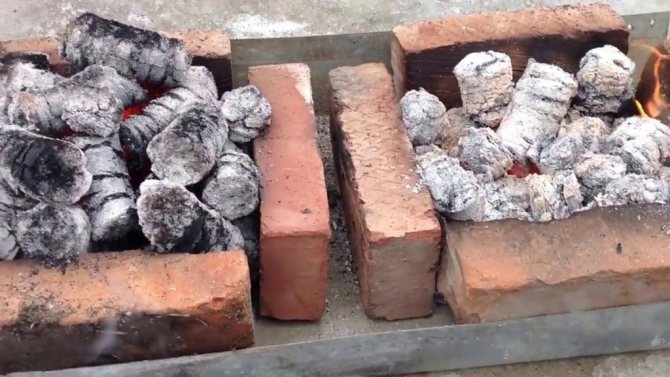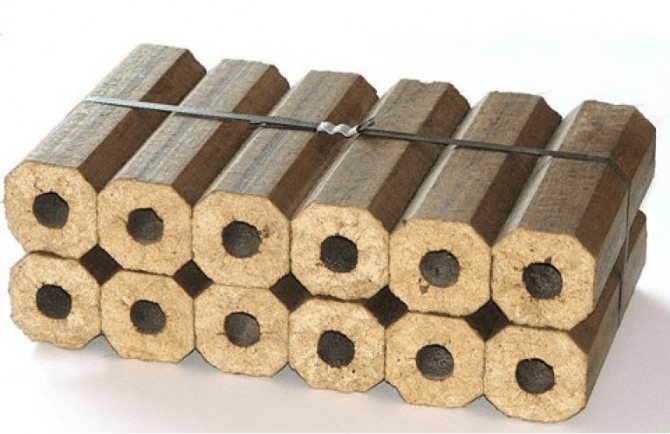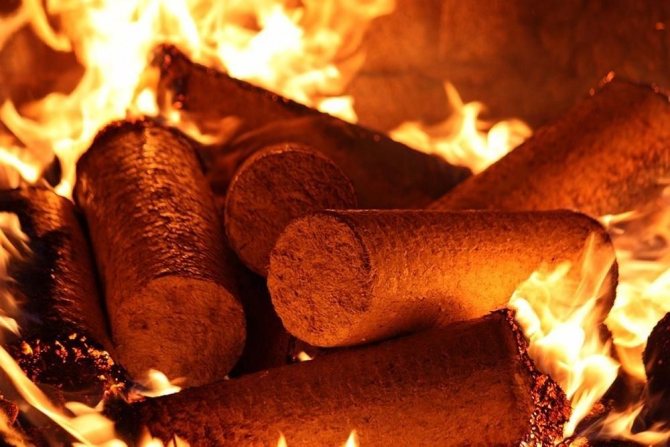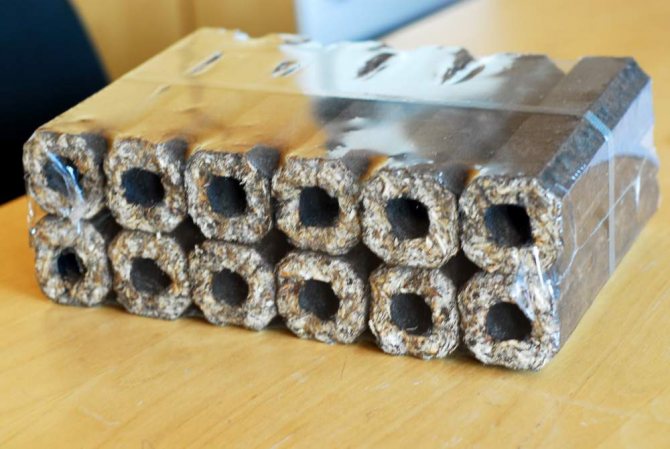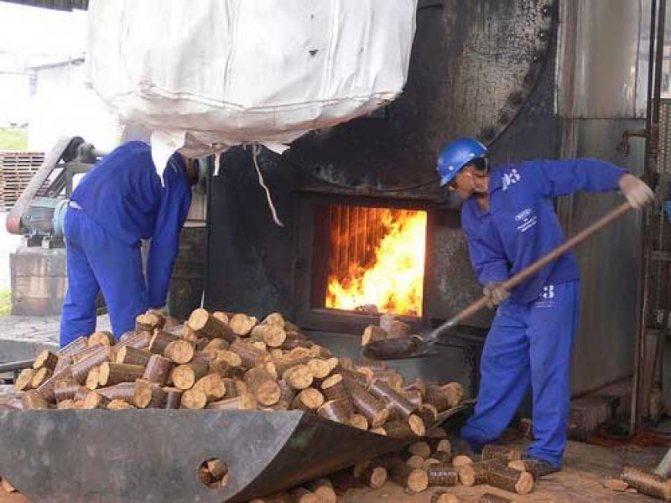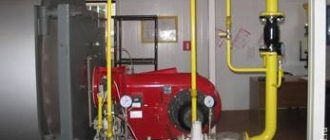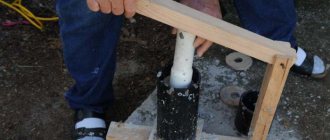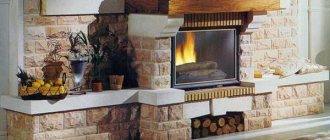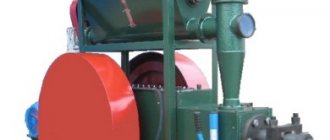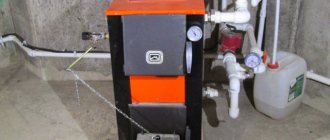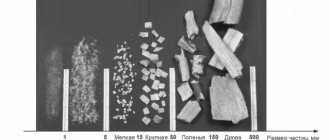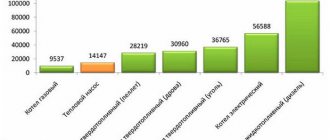It is not only possible to use pellets and eurowood as fuel in ordinary stoves (stove stoves, bulleryan, Russian, etc.) and boilers, but, on the contrary, is only welcome. Still, the characteristics of Eurowood are much superior to those of ordinary firewood.
It is imperative to remember that the calorific value of euro wood is 4-5 times higher than that of ordinary firewood (natural moisture) and 2-3 times than that of kiln-dried firewood. Therefore, you need to lay briquettes following the above. If, for example, you used to heat your stove with ordinary wood, then it is advisable to put 2-3 times less briquettes in the firebox. So you will avoid quick burnout of firewood and accelerated (forced) heating and overheating of the oven walls.
The temperature of the walls of a Russian stove after the furnace is usually no more than 70C. In very rare cases, they heat up to 900C. With this in mind, the furnace is designed. But, if you often overheat the walls of the stove, then cracks will begin to form on them and you may have to completely sort out the stove masonry. Therefore, it is worth not shifting the firewood and, it is better to add fuel once again than to use a forced furnace, which can lead to the complete destruction of the furnace or even to a fire hazard. Before the firebox itself, it is imperative to clean the stove from old ash. If there is a blower, be sure to clean it too. After cleaning, you need to put some paper, wood chips, bark, cones - any material on the grate for a better ignition. Briquettes are already stacked on top. They should be laid neatly, but not tightly, so that there is room for air.
If the stove does not have space for lining additional fuel, be sure to leave a little space at the beginning, placing the briquettes at a distance of about 15-20 cm from the door. After that, we simply open the blower door, fix it, and set fire to the paper or other material that we put. The firebox needs to be closed, but the fire needs to be monitored from time to time. After the briquettes are burned out, you can put new ones. You should not stir up the wood during the combustion process, they themselves burn evenly and burn completely.
Recently, the trend of a return to old traditions has become clearer, at least in the household sphere. Each owner wants to have a stove or fireplace in his home, which he identifies with the hearth. The warmth, coziness and comfort that stoves and fireplaces can give us are incomparable with anything. In addition, in private houses, a heating system is often already established, therefore, a stove or fireplace is more of a decorative tool designed to bring peace, peace and joy.
To light a stove or fireplace, we can use ordinary firewood, or we can resort to the help of innovative fuels. In this article, we would like to talk about how to heat the stove with fuel briquettes, a modern alternative to classic firewood.
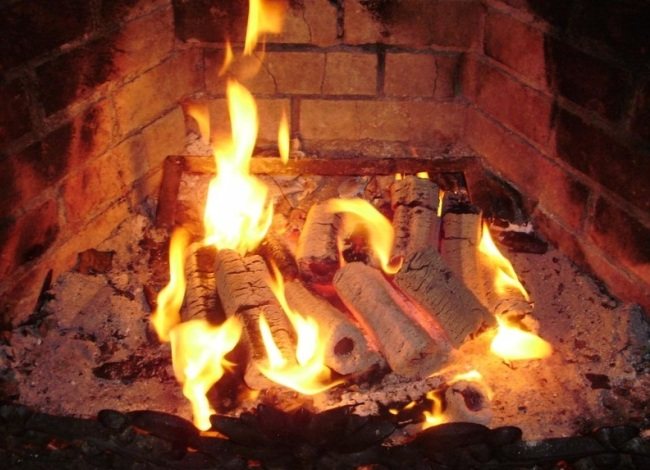
General information
Fuel briquettes, or as they are also called eurowood, are made from pressed natural materials, most often sawdust, sometimes peat or straw, rarely from seeds or nut shells. During the pressing process, most of the moisture is released from the wood, which allows obtaining high calorific characteristics. Unlike firewood, whose maximum dryness is determined by 20% moisture, the same parameter for fuel briquettes is 8-9%.
The version of the briquettes can be different:
- Eurobriquettes RUF - made exclusively by pressing without additional processing.
- Eurobriquettes Nestro are compressed briquettes with a cylindrical shape, sometimes with a hole in the middle.
- Pini-Kay Eurobriquettes are compressed sawdust fired with a gas-air mixture to create a more durable shape, which increases storage time and protection from moisture.
Classification of briquettes
According to the shape and manufacturing technology, the bars are divided into several types.
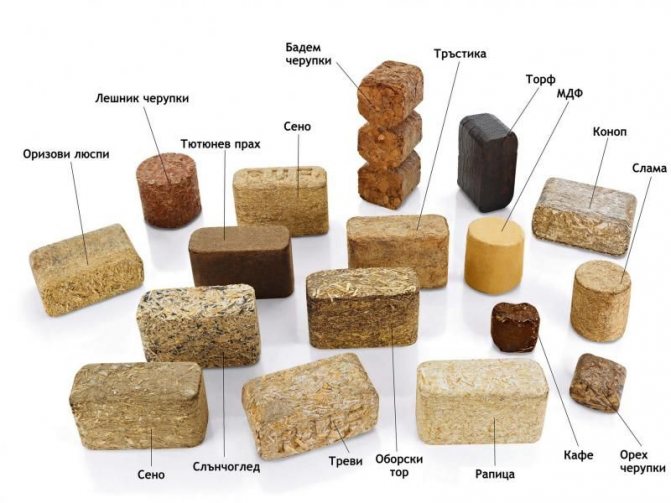

By form
The most common types of fuel briquettes, differing in shape:
- pini key
- ruf
- unhappy
The fuel material is the same. Products have the same calorific value, but different density.
Pini-key bars can be square or hexagonal. An opening along the center section creates ventilation that promotes combustion. The density of Eurowood is the highest, equal to 1.08-1.40 g / cm3.
Roof briquettes are made in the form of small bricks. They have a low density - from 0.75 to 0.8 g / cm3.
Eurodroves are not very shaped like cylinders. Their density is average - from 1 to 1.15 g / cm3.
By material
For the manufacture of fuel, sawdust, husk of seeds, buckwheat and rice, tyrsu, peat are used.


The material of briquette raw materials depends on:
- ash content
- combustion rate
- presence of soot
- calorie content
According to the results of comparing the characteristics, it turned out that, despite the same composition of briquettes, their properties may differ.
Seed bars have the highest calorific value. The presence of oil in their composition promotes combustion, which is an indicator of high energy value. However, oil causes soot to accumulate in the chimney.
- Wood briquettes made from compressed sawdust are less caloric.
- Straw bars are quite in demand, their calorie content is slightly lower, and the ash content is higher.
- Eurodroves from tyrsa have excellent heat transfer, while their ash content is high.
- On the contrary, briquettes made of pressed rice husks have a high ash content and a low calorific value.
Kindling a bath
Euro briquettes are a universal fuel, they can be used to heat all types of furnaces and boilers. They can be used in outdoor grills and home fireplaces. At the same time, the consumption of fuel briquettes is always significantly less than that of ordinary firewood.
Many people are interested in whether it is possible to heat the stove with fuel briquettes if it is made of steel, an ordinary stove? This question is quite logical, since such stoves have restrictions on the calorific value of the fuel, you cannot heat a steel bath stove with black coal, which emits 4900 kcal / kg of heat. But in the case of Euro briquettes, less heat is released, which means that you can heat the stove in the bath with them.
For a bath, not only the heat generated is important, but also the duration of burning of wood or alternative fuel. The longer the wood burns with maximum heat release, the better for the sauna stove and the sauna itself.
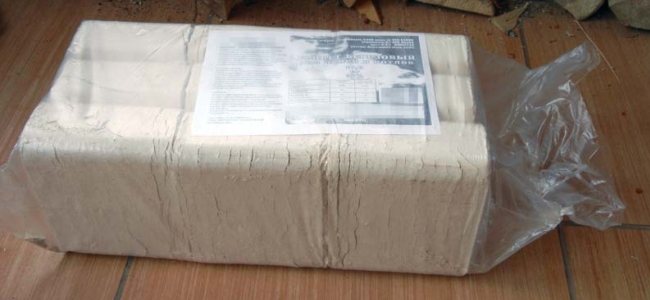

It is not very easy to light fuel briquettes, the fire does not catch immediately, but after they catch fire, they will burn and smolder for a couple of hours, which is much longer than the combustion of ordinary firewood. Such a long combustion time of fuel briquettes is due to their high density and low moisture content.
A large amount of heat generated and a long burnout time suggests that the consumption of fuel briquettes for heating a house is much less than that required for ordinary firewood.
Note that, according to the reviews of people, it is not necessary to completely fill the furnace of a sauna stove with euro-wood, so as not to quickly reach the maximum values of heat transfer.
An interesting point with Euro briquettes is the residues after their combustion. Possessing increased density characteristics, this fuel burns out almost completely, it does not leave a large amount of ash, only a small pile of ash. Ash from fuel blocks smells unpleasant, but is an excellent fertilizer.
When burning Euro briquettes, practically no smoke is emitted, which is very valuable for maintaining the cleanliness of furnaces, boilers, and chimneys. According to experts, the least amount of tar is in briquettes of linden fuel, therefore, when using such fuel, chimneys and boiler nozzles are the least affected.
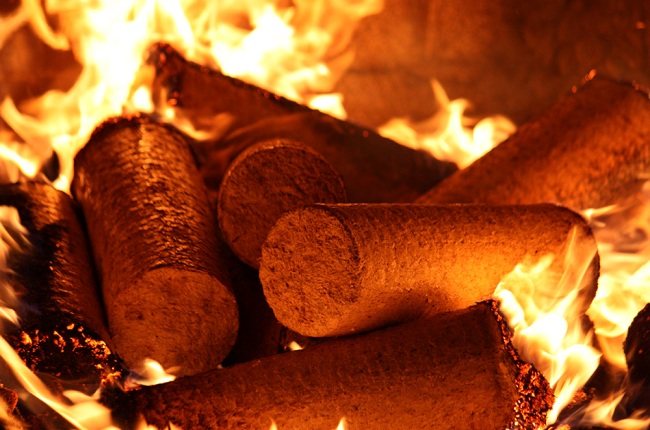

Fuel briquettes are an excellent option for lighting a sauna in a black way. As we have already said, this fuel is environmentally friendly, it does not emit smoke, it gives enough heat, and phytoncides appear in the heated air, which have a beneficial effect on the human body and improve immunity. Using the same linden euro briquettes, you will feel how your body heals, inhaling the pleasant aromas of flowers, honey and trees.
House heating
For heating a house, fuel briquettes are perhaps ideal. The ability to light the stove once and maintain the fire and heat for a long time without additional throwing, allows us to speak about the good characteristics of Euro briquettes. Consider how to heat a brick stove with fuel briquettes within the house.
Of course, the pressed bricks will not immediately burn, so we will figure out how to ignite the fuel briquettes. It is quite simple to do this, the first thing to do is to put tree bark, wood chips, some dry newspapers into the oven, and alternative firewood should be placed on top. During kindling, while the chips are actively lighting up, adjust the blowing. As soon as the fire on the first briquettes started playing, the rest can be reported.
Another option is to heat the stove with fuel briquettes after the first batch of firewood has burned out and decent coals have appeared. In such a furnace, quickly grab the fire on Euro briquettes.
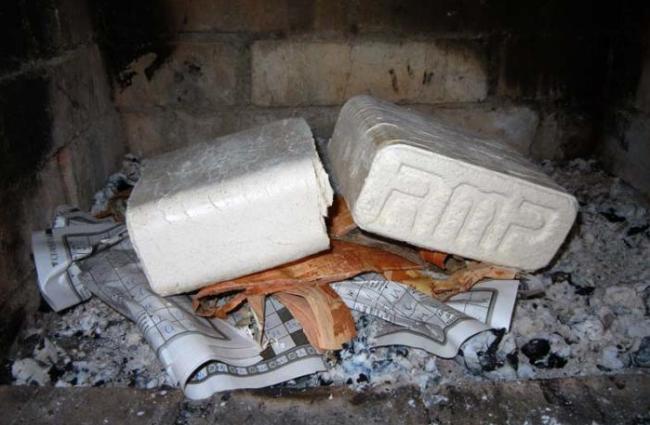

Depending on the needs, we choose the tactics of filling the furnace with fuel:
- If you fold the fuel briquettes loosely, at a short distance from each other, then the fire in the stove will be quite intense, there will be a lot of heat, which will allow you to quickly heat the house.
- If you fold the alternative firewood tightly to each other, and cover the blower, then the firewood will smolder for a longer time, which is perfect for heating the house at night. At the same time, the consumption of fuel briquettes per day will be several times less firewood.
In order to roughly understand how many Euro briquettes will be required for heating a house, several experiments should be carried out, each time figuring out this parameter in practice. There are too many nuances in this matter.
It is worth noting that fuel briquettes have a specific purpose - to create warmth, while firewood can be viewed in order to create a comfortable and cozy environment. For example, is it possible to heat the fireplace with fuel briquettes - well, of course, yes, but they will not create such an atmosphere as firewood with its pleasant crackling and uneven fire. By the way, the smell from burning wood is stronger and more pleasant.
In conclusion, I would like to say a little about the storage of Euro briquettes and compare it with the preparation and storage of firewood. Fuel briquettes are sold in separate packages wrapped in cellophane. In this state, they are not afraid of moisture, which means they can be put in the back room, in the attic, in the basement or in the shed. Euro briquettes look like bricks or tubes, all of the same shape, which is very convenient for storage. In addition, they take up much less space, since they will need several times less than firewood for the winter.
If we remember what difficulties await us in the preparation of firewood, there is room for thought when choosing the right fuel. Eurobriquettes do not need to be sawed, chopped, stored and dried throughout the year, they are already ready for use.
Solid fuel stoves are used to heat a bathhouse or a summer residence in a private house. The most common fuels have long been wood and coal. But now more and more people are using their alternative - briquettes.
Briquettes are made from various wastes of wood production (sawdust), straw, peat, husk of seeds of cereal plants. With the help of a press and high pressure, small homogeneous particles are fastened together, then cut into rectangles or cylinders. The heat transfer of this type of fuel is much higher than that of conventional firewood.
How to properly heat with briquettes?
To achieve maximum results, the stove should be properly heated with fuel briquettes.
Sauna stove
Heating a sauna room requires fuel, which not only generates a large amount of heat, but also burns out longer. This will ensure a stable temperature over a long period of time. These are the properties that briquettes have.
When firing up the stove and its firebox, you should adhere to the following tips:
- thoroughly clean the furnace from ash and other fuel residues from the previous furnace;
- put some wood chips, paper, bark or other flammable materials on the grate;
- then put a small amount of Euro wood and light the firebox.
This type of fuel is very good for use in saunas. The smell of essential oils from environmentally friendly wood materials fills the entire room and has a beneficial effect on the health of visitors.
Furnace for home heating
It is convenient to use fuel briquettes for the stove in the house. They can be ignited and nothing else can be thrown over for a long time. There are two ways to ignite eurowood in a home oven:
- The first one is similar to the ignition of fuel in a bath: briquette fuel is placed on dry chips or paper. The fire is regulated by blowing.
Ignition with firewood
Ash from burning wood briquettes can be used as fertilizer in any garden plot.
After several fireboxes with briquettes, you will be able to assess their efficiency and find out the consumption. In the future, you can compare the number of required briquettes and the amount of firewood for heating your particular house.
Fuel briquettes production technology
Euro briquettes are a solid type of fuel material that is produced industrially, so the finished elements have the same shape and size.


To preserve the environmental friendliness of the finished material, the consumable raw materials are subjected to maximum pressing and drying under the influence of high temperatures. This method of production completely excludes the use of adhesives and other chemical components that can release hazardous substances into the environment.


In some cases, additional heat treatment of raw materials is used - firing to increase the density of briquettes and improve their operational characteristics. The pressing process allows you to get a quality product, ready for subsequent packaging and transportation.
What kind of stoves can be fired with briquettes?
Briquettes are distinguished by their versatility. They can be used in all types of ovens, including brick ovens. They emit about four and a half kcal per kg, which is quite acceptable for a heating device with refractory bricks. The main advantage of briquettes in comparison with ordinary logs is that they burn out several times slower.
Such fuel is economical and cheap. Regular logs need to be sawed, chopped, trimmed and dried. And Eurowood does not require long-term procurement: it is enough to purchase and store them in a dry room in a film or original packaging.
The fact that the fuel burns slowly is a disadvantage in some rooms. It will take several hours to warm up the house in winter. The heat from such fuel is much less. And after the briquettes are burned, the ash has a characteristic pungent smell.
Output
Thanks to modern technologies, we can use an alternative fuel - briquettes. These are compressed particles of various materials.The most common are sawdust briquettes, but a similar product can be purchased from straw, peat or coal.
With the help of fuel briquettes, you can heat a bathhouse, a summer cottage and a private house. Their main advantages are environmental friendliness and high heat transfer at an affordable price. The disadvantages include the long time it takes to ignite the fuel, and uncharacteristic firewood, a pungent smell of ash.
Comparative characteristics of briquettes
| Type of fuel | Calorific value, MJ / kg |
| Anthracite | 26,8-31,4 |
| Brown coal | 10,5-15,7 |
| Coal | 20,9-30,1 |
| Gas | 27 |
| Peat (moisture 20%) | 15,1 |
| Diesel fuel | 42,7 |
| Wood (humidity 40%) | 6-11 |
| Briquettes (from sawdust) | 16-29,5 |
Each type of briquettes has its own characteristics and advantages. And although they are all great for heating in a domestic environment, it is still worthwhile to familiarize yourself with their characteristics in more detail in order to choose the best option.


Forms of fuel briquettes
Wood briquettes
This type of briquettes is obtained by pressing various wood waste - dead wood, sawdust, shavings, substandard wood. Before pressing, the waste is heated to a certain temperature, as a result of which an adhesive substance, lignin, is released from the cells. Thanks to lignin, briquettes acquire high strength and retain their shape during transportation and storage.
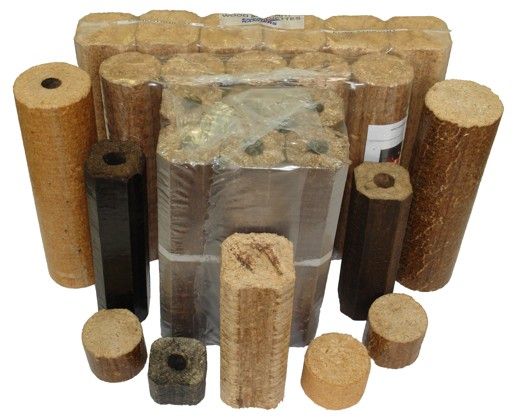

Wood briquettes
The advantages of briquettes over solid wood are obvious:
- the density of briquettes is constant and amounts to 1240 kg / m³, the density of wood depends on the species and ranges from 150 to 1280 kg / m³;
- the maximum moisture content of briquettes is 10%, of wood - from 20 to 60%;
- when the briquette is burned, the ash volume is equal to 1% of the total mass, wood - 5%;
- when burning, briquettes release 4400 kcal / kg, wood - 2930 kcal / kg.


Wood briquettes
In addition, wood briquettes have other advantages:
- pressed wood does not spark when burning and emits very little smoke;
- the boiler is kept at a constant temperature;
- briquette burning time 4 hours;
- the coals remaining after combustion are great for cooking over an open fire;
- the correct shape of the briquettes simplifies their transportation and storage.
Such fuel is sold not in cubic meters, like wood, but in kilograms, which is much more profitable.
Prices for Eurodrova-Briquettes
Eurodrops Pini-kay
Coal briquettes
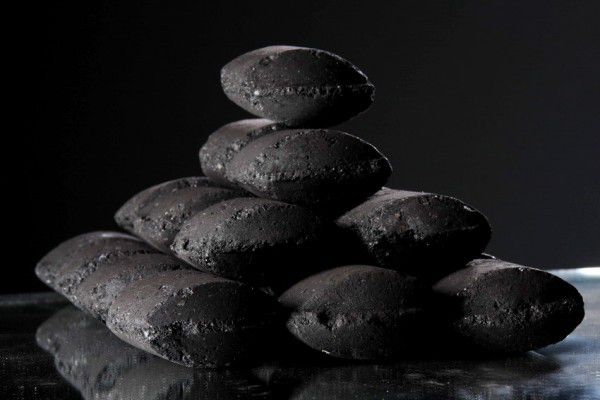

Coal briquettes
This type of briquettes is obtained from the screening of coal. First, the screenings are crushed, mixed with a binder, and then compressed under high pressure.
The main properties of such fuel:
- coal briquettes do not smoke;
- do not emit carbon monoxide;
- burning time in conventional boilers from 5 to 7 hours, with controlled air supply - 10 hours;
- suitable for domestic use;
- have a compact shape;
- when burning, they emit 5200k / cal and maintain a constant temperature;
- maximum ash volume - 28%;
- have a long shelf life.
Coal briquettes are the most optimal fuel in harsh winters, when pressure drops in domestic gas systems due to low temperatures. Briquettes burn at any temperature, the main thing is that there is a constant flow of air.
Prices for coal briquettes WEBER
Coal briquettes WEBER
Peat briquettes
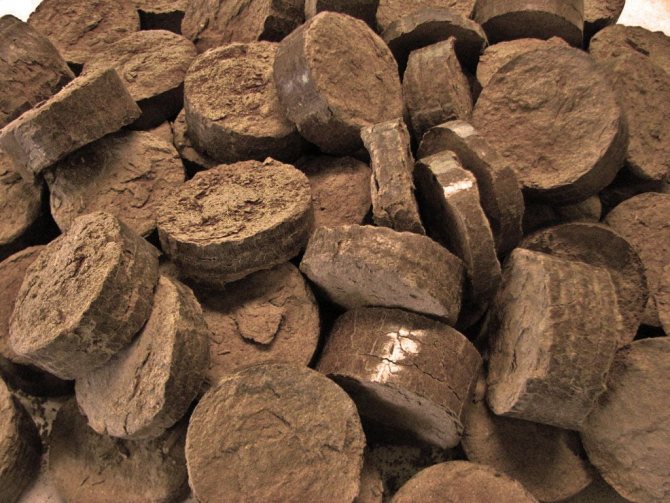

Peat briquettes
To make briquettes, peat is dried, heated and pressed under high pressure. The result is neat lightweight bricks of a dark color. With controlled air supply, peat briquettes maintain the temperature for 10 hours, which is very convenient for heating the house at night.
Basic properties:
- suitable for all types of ovens;
- heat transfer is equal to 5500-5700 kcal / kg;
- ash volume 1% of the total briquette volume;
- affordable price;
- the minimum amount of impurities in the composition.

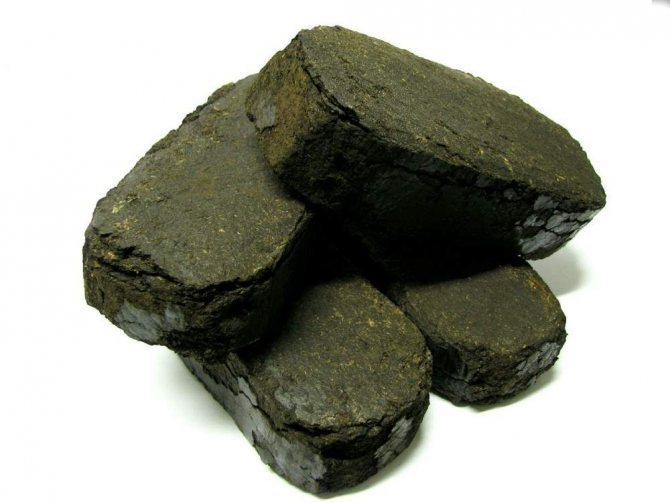
Peat briquettes
The ash that remains after fuel combustion can be used as an effective lime and phosphorus fertilizer.For many owners of private households, this factor is decisive when choosing heating briquettes. Since peat is a flammable substance, it should be stored at a safe distance from open flames and heating appliances. Even dust that has spilled out of the packaging can ignite and cause a fire, so you need to handle the briquettes correctly.
Hull briquettes
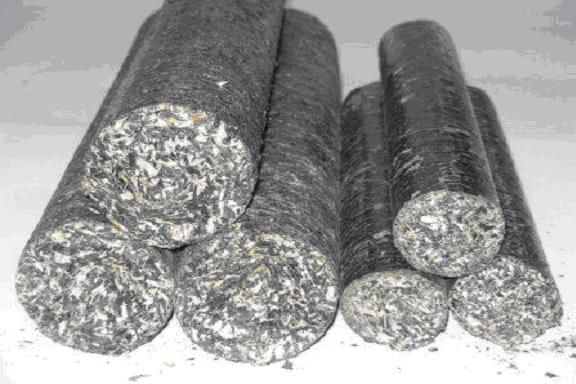

Hull briquettes
Sunflower husks, buckwheat and rice husks, rye, oats and even straw are widely used for the manufacture of fuel briquettes. The most common are sunflower husk briquettes, since a large percentage of waste remains in the production of oil. The maximum moisture content of the husk for pressing is 8%, which increases heat transfer and shortens the ignition time.


Sunflower briquettes
Specifications:
- the density of briquettes is 1.2 t / m³;
- heat transfer - 5200 kcal / kg;
- ash volume from 2.7 to 4.5%.
Additional benefits:
- lack of harmful impurities;
- affordable price;
- long burning time;
- convenience of storage and transportation.
